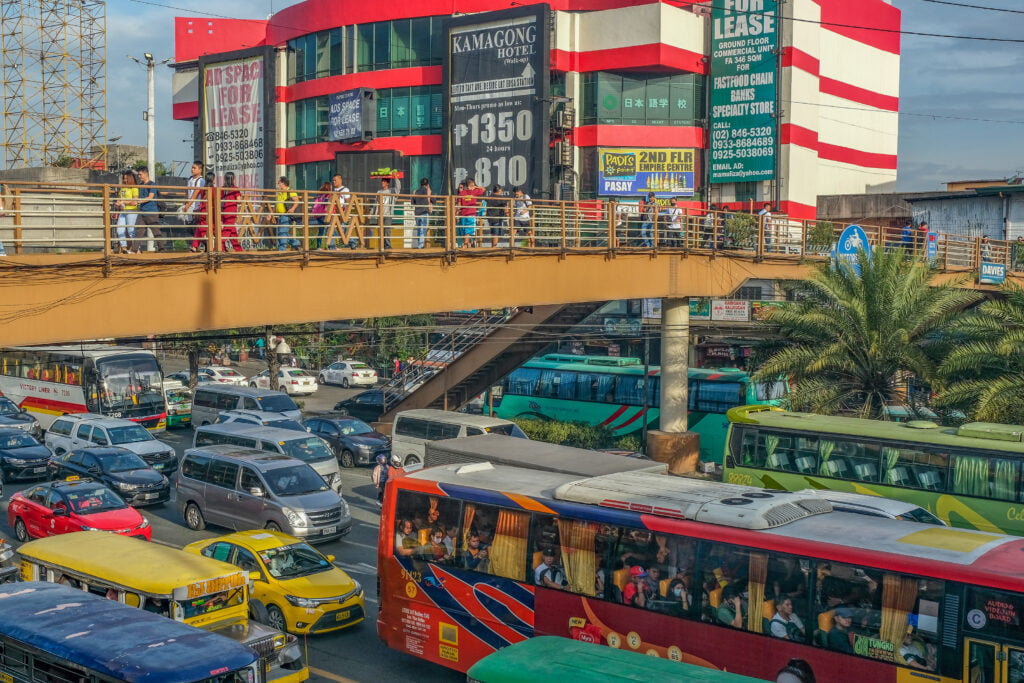Transit Advertising Philippines for Unmatched Brand Name Visibility
Transit Advertising Philippines for Unmatched Brand Name Visibility
Blog Article
Recognizing the Function of Transportation Advertising in Enhancing Brand Presence and Consumer Interaction
Transportation advertising and marketing has actually arised as a critical component in the marketing landscape, providing special possibilities for brands to raise their exposure and involve consumers properly. With the capability to reach a captive and diverse audience throughout their daily commutes, these marketing approaches are not merely regarding visibility; they are concerning developing meaningful connections with prospective clients. As we check out the multifaceted advantages and ingenious approaches within transit advertising and marketing, it comes to be vital to think about just how these elements jointly influence consumer understanding and habits, elevating inquiries about their long-lasting effect on brand commitment.
Definition of Transportation Advertising
Transit advertising and marketing describes the practice of promoting items, services, or brands via promotions put around public transport systems. This form of marketing encompasses a variety of placements, including posters on buses and trains, digital screens at transit terminals, and covers on the exterior of lorries. It aims to reach a varied target market, taking advantage of on the high foot traffic connected with public transit.
Transportation advertising and marketing is strategically placed to record the focus of travelers, that often spend considerable time traveling or waiting. By integrating promotions right into the daily routines of people, brand names can develop a long-term perception and foster brand name recognition. The medium is specifically reliable in metropolitan settings, where public transport is a main setting of traveling.
In addition, transportation advertising can help with localized targeting, enabling companies to reach certain demographics based upon transportation courses and terminal areas. As urban populations grow and the use of public transportation rises, this marketing technique has gained prestige as an important component of integrated advertising and marketing techniques. The vibrant nature of transit marketing, combined with its ability to involve customers in a restricted environment, highlights its relevance in contemporary advertising and marketing methods.
Benefits of Transit Marketing
The effectiveness of transit advertising and marketing hinges on its capacity to deliver a wide variety of advantages to brand names looking for to enhance exposure and interaction. Among the main benefits is the considerable reach it uses; transportation advertisements can successfully target diverse demographics across metropolitan locations, reaching both commuters and pedestrians alike. This wide direct exposure significantly boosts brand name understanding.
One more advantage is the high frequency of perceptions. As transportation vehicles follow established routes and stop at numerous areas, they produce recurring direct exposure that strengthens brand messages. This regularity promotes experience, which is vital in customer decision-making.
Transit advertising is likewise affordable contrasted to other media systems. Offered its extensive reach and possibility for high perceptions, brands typically experience a lower price per thousand perceptions (CPM), maximizing their marketing budget plan.
Furthermore, transportation ads can create a feeling of area connection. By aligning with local transportation systems, brand names can resonate with regional target markets and promote a feeling of regional satisfaction. This localized method boosts brand commitment and interaction, making transportation marketing an engaging choice for services intending to strengthen their existence in the market.

Efficient Strategies for Transportation Projects
To make best use of the influence of transportation projects, brand names ought to utilize strategic preparation and execution tailored to their target market. Initially, identifying the group qualities of the target market utilizing public transit is critical. This permits brand names to create customized messaging that reverberates with possible customers.
Next, choosing the ideal transit tools is necessary. Whether using bus covers, subway posters, or electronic screens, each tool has hop over to here one-of-a-kind benefits that can enhance visibility. For instance, dynamic visuals on bus covers can stand out, while digital advertisements can be upgraded often to show timely promotions.
In addition, integrating a natural branding strategy throughout transit systems makes certain uniformity and enhances the brand name's identity. Using remarkable taglines and captivating layouts will enhance brand recall amongst commuters.
By using these techniques, brand names can efficiently harness the potential of transit advertising and marketing, promoting better awareness and connection with their target audience. Eventually, a well-executed transit campaign can drive considerable development in brand presence and customer engagement.

Measuring Impact and Interaction
In examining the effectiveness of transportation marketing campaign, precise dimension of influence and engagement is essential for brands seeking to optimize their advertising and marketing methods. Metrics such as reach, regularity, and impacts supply fundamental data to evaluate exposure. Examining these aspects helps figure out the amount of possible clients are revealed to the promotions throughout their everyday commutes.
Interaction can be more gauged with consumer communications, such as site traffic, social networks points out, and direct responses to calls-to-action featured in the advertisements. Making use of tools like QR codes or special URLs can facilitate tracking of customer habits directly connected to transit campaigns. Surveys and responses mechanisms likewise function as useful techniques to collect qualitative data basics on consumer understandings and recall of the ad.
Furthermore, progressed analytics and attribution designs can correlate transit direct exposure with succeeding getting habits, supplying insights right into the return on investment. By using an extensive method that integrates qualitative and measurable steps, brand names can develop a nuanced understanding of their transit marketing impact. Ultimately, this data-driven approach enables brands to fine-tune their projects, ensuring they reverberate effectively with target audiences and enhance total brand presence.
Situation Research Studies of Effective Projects
Effective transportation marketing campaign work as compelling instances of exactly how reliable techniques can elevate brand name presence and engagement. Transit Advertising Philippines. One significant instance is the "I Love New York" campaign, which transformed the city's photo and drew in numerous tourists. By using train ads, billboards, and bus covers, the campaign produced a solid, natural brand name identity, causing a significant uptick in tourist and local service patronage
An additional excellent project is Coca-Cola's "Share a Coke" initiative, which leveraged transportation advertising and marketing to individualize the brand experience. By featuring popular names on marketing materials throughout numerous transit systems, Coca-Cola cultivated a deeper emotional link with customers, motivating them to share their experiences on social media sites.
Additionally, the "Got Milk?" project properly made use of public transport advertisements to get to a broad audience, strengthening the message of the value of milk in a well balanced diet. The project saw a measurable rise in milk usage in target demographics.
These instance studies illustrate that when performed attentively, transportation advertising can significantly enhance brand presence, foster customer involvement, and drive measurable outcomes, showing its vital function in modern-day advertising and marketing methods. - Transit Advertising Philippines
Conclusion
Finally, transit advertising and marketing serves as an important tool for boosting brand presence and fostering consumer engagement. By utilizing purposefully placed promotions within public transport systems, brands can properly get to diverse find out this here target markets and strengthen acknowledgment through constant direct exposure. The execution of targeted messaging and cutting-edge techniques additionally amplifies the influence of transportation projects. Inevitably, the capability to measure engagement and examine effective case research studies underscores the performance of transit marketing in driving brand loyalty and customer communications.
Transit advertising and marketing has actually arised as an essential aspect in the advertising landscape, providing one-of-a-kind chances for brand names to elevate their presence and involve customers effectively.Furthermore, transit advertising and marketing can assist in local targeting, enabling organizations to reach certain demographics based on transportation routes and station places.In assessing the efficiency of transportation advertising projects, precise measurement of impact and involvement is crucial for brand names looking for to maximize their advertising techniques.Successful transit advertising and marketing campaigns offer as compelling examples of how efficient techniques can raise brand name presence and involvement.In conclusion, transportation marketing offers as a crucial tool for enhancing brand name exposure and promoting consumer involvement.
Report this page